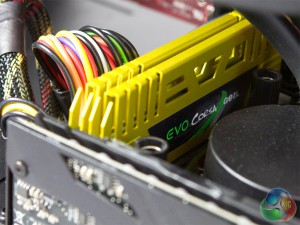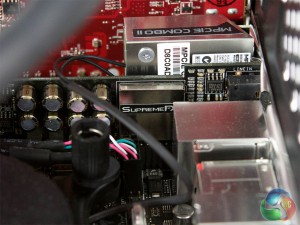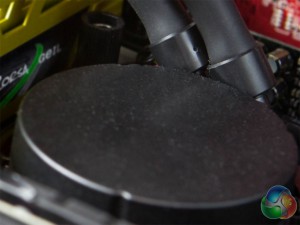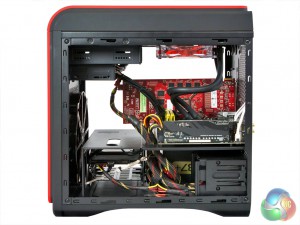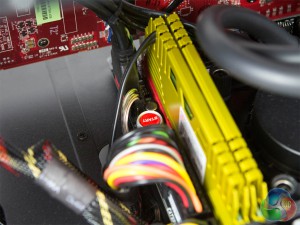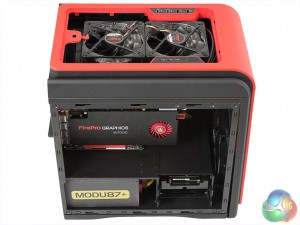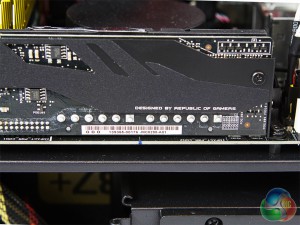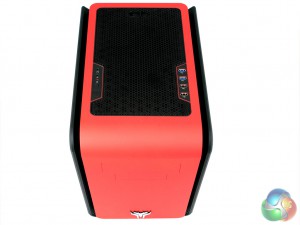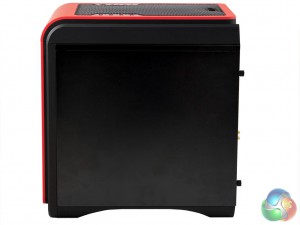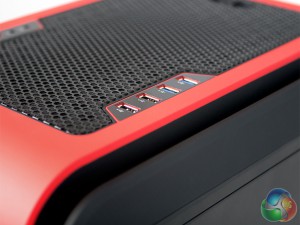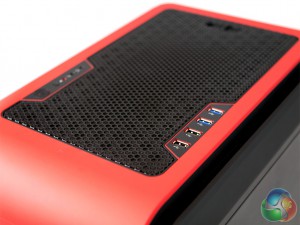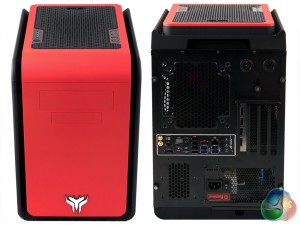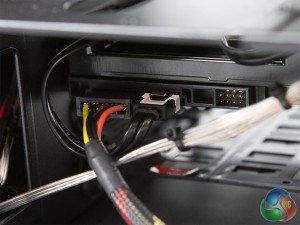Central to the YOYOTech M-Cube WS is its Core i5-4670K processor, which comes from Intel's latest Haswell range. There are five different versions of the 4670, which quite misleadingly have very varied frequencies and features.
The K variety, as we have come to know, is the top-end unlocked model of Intel processors. So the 4670K runs at a nominal 3.4GHz, with a 3.8GHz Turbo Boost 2.0, but YOYOTech has taken full advantage of the unlocked capabilities, and permanently pushed the processor to 4.3GHz across all four cores.
Being a Core i5, though, there is no Hyper-Threading on hand to turn the four physical cores into eight virtual ones.
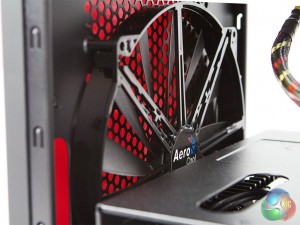
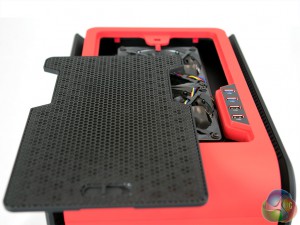
Amongst gamers, the M-Cube WS would be called an overclocked system. But workstation manufacturers prefer terms that don't imply pushing hardware beyond its limits, because stability is much more important in a mission-critical professional activity like 3D animation.
So a term like “frequency enhanced” is generally preferred. YOYOTech keeps the side effects of the M-Cube WS's frequency enhancement under control with a Corsair Hydro Series H100 Liquid Cooler.
YOYOTech has partnered the processor with 8GB of Geil 2,133MHz DDR3 SDRAM, in the form of two 4GB DIMM modules, which is a little miserly for professional usage, although shouldn't cause any particular problems. The ASUS MAXIMUS VI IMPACT motherboard has a couple more DIMM slots free, though, so you can always upgrade when 8GB feels limited.
The ASUS motherboard uses Intel's Z87 chipset, but has a Mini-ITX form factor, so only offers a single 16-lane PCI Express slot. The board provides four USB 2.0 and four USB 3.0 ports on the backplane, plus a couple more of each on headers, which YOYOTech has routed to the top of the chassis.
Graphics acceleration is taken care of by an AMD FirePro W7000. This is the entry point for AMD's high-end graphics selection, and is a very cost-effective option. It sports 1,280 stream processors and 4GB of GDDR5 memory, with 154GB/sec bandwidth.
Support is available for DirectX 11.1, OpenGL 4.2 and OpenCL 1.2. We have found NVIDIA's Kepler Quadros to be superior in performance, but the AMD FirePro W7000 still provides a lot of performance for the money. It's also relatively low in power consumption, requiring less than 150W.
Normally, the chassis a 3D workstation comes in doesn't warrant much attention. However, its small size and colourful disposition mean that the M-Cube WS's Aerocool Dead Silence DS Cube case does require a few sentences.
Our sample had a window, which is an option that some professionals might not want. But the interior is tidy and compact, so not unattractive. As mentioned earlier, the top has a couple of USB 2.0 and 3.0 ports, plus audio connectivity and the power and reset buttons.
We reviewed this chassis back in October 2013. You can read this in depth analysis, over here.
The front has space for single 5.25in and 3.5in drives, although neither were installed on our test sample. We would have liked at least a DVD rewriter, and a mult-format memory card reader is always a useful inclusion. Inside, there's space for two 2.5in or 3.5in drives, plus a tray for a further two 2.5in drives.
YOYOTech has supplied a single 1TB Western Digital VelociRaptor SATA III conventional hard disk. This is a 10,000rpm drive with a five-year warranty and a minimum 600,000 load / unload cycles, so it's built to last. However, we normally expect workstations to sport a solid state disk for operating system and applications, with a lesser conventional hard disk for general data storage.
The chassis sports a Seasonic 650W PSU, which will be adequate for the components, if not exactly over specified.
 KitGuru KitGuru.net – Tech News | Hardware News | Hardware Reviews | IOS | Mobile | Gaming | Graphics Cards
KitGuru KitGuru.net – Tech News | Hardware News | Hardware Reviews | IOS | Mobile | Gaming | Graphics Cards


